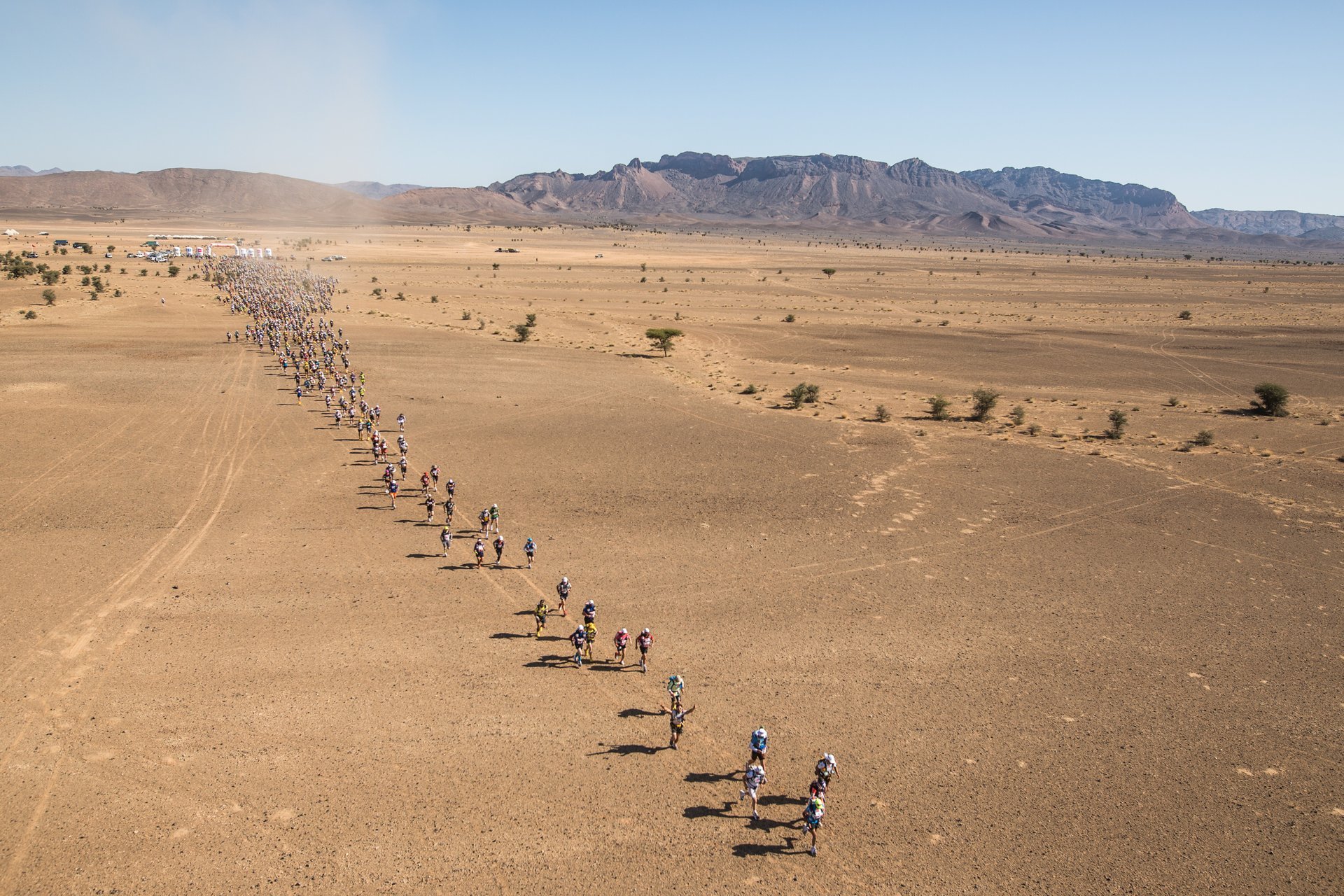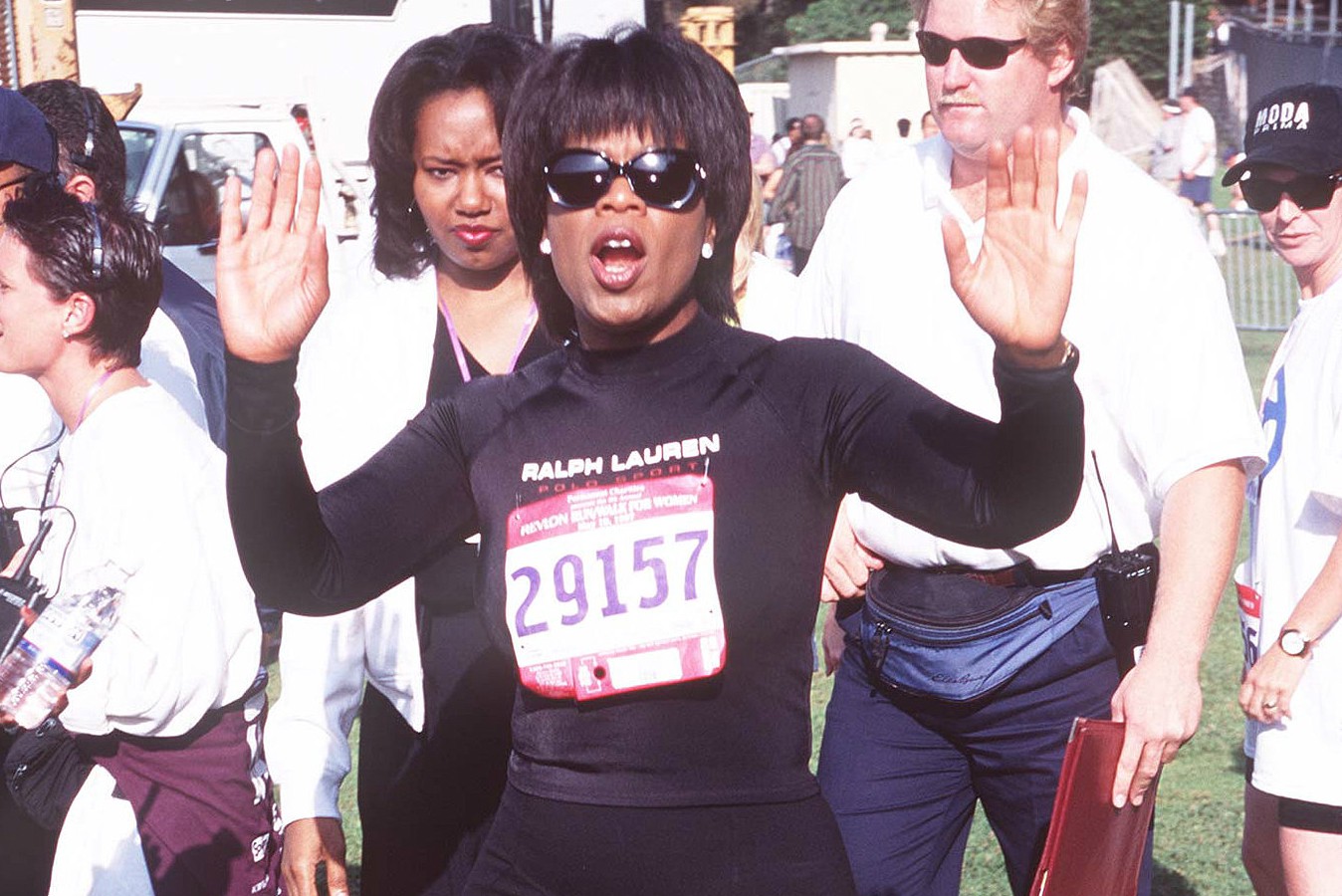

Featured
What Is The Hardest Marathon
Published: August 29, 2023
Discover the featured marathon that pushes athletes to their limits. Learn what makes it the hardest marathon and find out how to conquer the challenge.
Introduction
Running a marathon is a significant challenge for any athlete, requiring months of training, mental fortitude, and physical endurance. However, not all marathons are created equal. Some races are known for their brutal courses, extreme weather conditions, or high-altitude locations, making them exponentially more difficult than your average 26.2-mile race.
In this article, we will explore the world of the hardest marathons, taking a closer look at what makes them so challenging and the factors that contribute to their reputation. Whether you are an experienced marathoner looking for a new challenge or just curious about the most grueling races out there, this article will provide you with valuable insights.
Marathons vary in difficulty for several reasons. The topography and elevation of the course play a significant role, as uphill stretches and mountainous terrain can test even the most seasoned runners. Additionally, weather conditions such as extreme heat, humidity, or cold can further increase the difficulty level of a marathon.
Furthermore, some marathons are designed to be exceptionally challenging, deliberately incorporating elements like steep hills, technical trails, or uneven surfaces. These races attract elite athletes and masochistic runners seeking to push their limits and conquer the most demanding courses.
From the mythical Marathon des Sables in the scorching Sahara Desert to the rugged trails of the Hardrock Hundred Mile Endurance Run, there are marathons that test both the body and the spirit. These races require mental strength, perseverance, and a strategic mindset to conquer the obstacles faced along the way.
Join us as we delve into the world of the hardest marathons, exploring their unique challenges, the preparation required to tackle them, and the strategies to successfully complete these grueling races.
Factors That Make a Marathon Hard
A marathon is already a daunting task, but certain factors can elevate the difficulty level and turn a race into a true test of endurance. Understanding these factors can help athletes prepare better and choose the right race for their level of training and experience. Here are some key factors that make a marathon hard:
- Course Topography: The elevation profile of a marathon course plays a significant role in its difficulty. A race with steep hills, challenging descents, or a combination of both will require runners to have good hill-running technique and strength in their legs.
- Extreme Weather: Running a marathon in extreme weather conditions, such as scorching heat, high humidity, or freezing temperatures, adds a whole new level of difficulty. These conditions can increase physical exertion and lead to dehydration, heat exhaustion, or hypothermia if not properly managed.
- Surface Conditions: The type of surface runners encounter during a marathon can impact the difficulty. Technical trails, uneven terrain, or slippery surfaces require greater focus and concentration, as well as proper footwear, to navigate safely.
- Altitude: Marathons held at high-altitude locations pose a unique challenge. The thinner air at higher elevations reduces the amount of oxygen available, leading to decreased aerobic capacity and increased effort for runners, making breathing more difficult.
- Cut-off Times: Some marathons have strict cut-off times to ensure the safety of participants. These time limits add pressure to runners, requiring them to maintain a specific pace and finish within a designated time frame.
- Crowd Support: While crowd support can be motivating, a lack of it or sparse spectator presence can make a marathon mentally demanding. The absence of cheers and encouragement can make the race feel more isolating and challenging.
It’s important to consider these factors when choosing a marathon to ensure the level of difficulty aligns with your training and goals. Each runner has different strengths and preferences, and what may be challenging for one person may not be the same for another.
By carefully analyzing the course details, weather conditions, and other factors mentioned above, runners can make informed decisions and select marathons that suit their abilities and desire for a challenging experience.
Types of Difficult Marathons
When it comes to difficult marathons, there are various types that athletes can choose from depending on their preferences and desired level of challenge. Here are some of the different types of difficult marathons:
- Mountain Marathons: These marathons take place in mountainous regions with steep ascents and descents. Runners must navigate rugged terrain and endure significant elevation changes, making it physically demanding and testing their endurance.
- Desert Marathons: Held in some of the most inhospitable deserts around the world, desert marathons subject runners to blistering heat, relentless sun, and often treacherous sand dunes. The extreme conditions make these races incredibly challenging, requiring mental fortitude, proper hydration, and careful sun protection.
- Extreme Weather Marathons: These marathons occur in regions known for their extreme weather conditions, such as freezing temperatures, heavy rain, or strong winds. Runners must battle against the elements, testing their resilience and adaptability in adverse weather.
- Urban Obstacle Marathons: These marathons combine road running with challenging obstacles that runners must overcome. Participants may have to climb walls, crawl through mud pits, or navigate through ropes, adding extra physical and mental challenges to the race.
- Trail Marathons: Trail marathons take place on rugged, unpaved trails, often in remote locations. The uneven terrain, steep inclines, and natural obstacles make these races physically demanding and require runners to possess good balance, agility, and endurance.
- High-Altitude Marathons: These marathons are held at high-altitude locations, where the lower oxygen levels can affect runners’ performance and increase the effort required to complete the race. Altitude marathons demand prior acclimatization and careful pacing to overcome the challenges of reduced oxygen supply.
Each type of difficult marathon presents its own set of challenges, making them ideal for athletes who are seeking a unique and demanding experience. It’s crucial for runners to consider their preferences, strengths, and training capabilities when choosing the type of difficult marathon they want to tackle.
No matter what type of difficult marathon an athlete chooses, it is important to approach the race with proper preparation, training, and respect for the challenges that lie ahead. By understanding the specific demands of the race and tailoring their training accordingly, runners can increase their chances of success and fully embrace the grueling nature of these marathons.
The Toughest Marathon Courses in the World
For those seeking the ultimate challenge, there are several marathon courses around the world that have gained a reputation for being exceptionally tough. These races push runners to their limits, combining elements like extreme elevation changes, harsh weather conditions, and technical terrain. Here are some of the toughest marathon courses in the world:
- The Barkley Marathons: Held in Frozen Head State Park, Tennessee, the Barkley Marathons is widely regarded as one of the toughest races on the planet. The course covers approximately 100 miles and includes over 60,000 feet of elevation change. Runners must navigate through unmarked trails, thick vegetation, and challenging terrain, often in grueling weather conditions.
- The Marathon des Sables: Known as the toughest footrace on Earth, the Marathon des Sables takes place in the Sahara Desert, Morocco. This multi-stage race covers around 156 miles in six days, where participants carry all their supplies and endure scorching temperatures exceeding 120°F. The combination of extreme heat, loose sand, and vast distances makes this race a true test of endurance.
- The Jungle Marathon: Set in the heart of the Amazon rainforest in Brazil, the Jungle Marathon is an incredibly demanding race that challenges runners with dense vegetation, treacherous trails, and intense humidity. The course stretches over 150 miles, exposing participants to the extreme conditions and endurance-sapping terrain of the world’s largest tropical rainforest.
- The Swiss Alpine Marathon: Taking place in Davos, Switzerland, the Swiss Alpine Marathon is renowned for its high-altitude course and challenging mountainous trails. Runners navigate through steep climbs, technical descents, and breathtaking landscapes, conquering over 9,000 feet of elevation gain in the process.
- The Jungle Ultra: Located in the remote Peruvian jungle, the Jungle Ultra is an epic race covering 142 miles in five stages. Runners must contend with muddy and slippery terrain, river crossings, and humid conditions that put their mental and physical endurance to the test.
- The Hardrock Hundred Mile Endurance Run: Set in Colorado’s San Juan Mountains, the Hardrock Hundred Mile Endurance Run is a grueling high-altitude race that reaches heights of over 14,000 feet. The challenging trails and extreme elevation changes make it one of the most demanding ultramarathons in the world.
These marathon courses offer unique challenges that attract both elite athletes and adventurous runners seeking to push their limits. Completing these races requires meticulous preparation, mental toughness, and a deep love for testing one’s physical and mental capabilities.
While these marathon courses may seem daunting, the sense of accomplishment and personal growth that comes from conquering them is unparalleled. They serve as a reminder of the indomitable spirit of human endurance and the boundless possibilities that exist when one pushes beyond their perceived limits.
Challenges Faced by Runners in Difficult Marathons
When tackling difficult marathons, runners face a myriad of challenges that test their physical and mental strength. These challenges require careful consideration and preparation to overcome. Here are some of the key challenges faced by runners in difficult marathons:
- Physical Demands: Difficult marathons push the body to its limits. The continuous pounding on the legs, feet, and joints can lead to fatigue, muscle cramps, blisters, and other physical discomforts. Runners must train their bodies to withstand prolonged exertion and develop strategies to manage pain and fatigue during the race.
- Mental Stamina: Conquering a difficult marathon requires a strong mental game. Runners must combat negative thoughts, self-doubt, and the urge to quit when faced with the physical and mental challenges along the course. Developing mental resilience and adopting positive affirmations and visualization techniques can help overcome these mental obstacles.
- Adverse Weather Conditions: Extreme temperatures, strong winds, heavy rain, or snow can significantly impact a marathon. Runners must endure these harsh conditions, adjust their pace and hydration strategies accordingly, and ensure proper protection from the elements.
- Navigating Technical Terrain: Marathons held on rough trails, rocky paths, or slippery surfaces require exceptional focus and agility. Runners need to be prepared for sudden changes in terrain, such as steep ascents and descents, tree roots, or uneven ground, that can increase the risk of falls and injuries.
- Hydration and Fueling: Maintaining proper hydration and energy levels throughout a difficult marathon is crucial. Runners must carefully plan their hydration and nutrition strategies, accounting for the duration of the race, weather conditions, and individual needs. Failure to properly hydrate or refuel can lead to fatigue, dehydration, and depletion of essential nutrients.
- Time Cut-offs and Time Pressure: Some difficult marathons impose strict time cut-offs to ensure the safety of participants. Runners must maintain a specific pace and reach checkpoints within designated time limits. The pressure of meeting these time requirements adds an additional layer of challenge, forcing runners to balance speed and endurance.
Overcoming these challenges requires a combination of physical training, mental preparation, and adaptability. Runners need to carefully plan their race strategy, including pacing, hydration, and fueling, and train in similar conditions to their target marathon. Drawing on past experiences and building mental resilience can also help runners overcome adversity during the race.
Despite the many challenges faced in difficult marathons, the sense of accomplishment and personal growth that comes from conquering them is unparalleled. Embracing these challenges and persevering through the hardships can lead to profound self-discovery and a renewed appreciation for the strength of the human spirit.
Mental and Physical Preparation for the Hardest Marathons
Preparing for the hardest marathons requires a combination of mental and physical training to ensure runners are adequately prepared for the challenges that lie ahead. Here are some key aspects to consider when preparing for the toughest marathons:
Physical Preparation:
Building a solid physical foundation is essential for tackling difficult marathons. Here are a few important factors to focus on:
- Gradual Training: Gradually increase mileage and intensity over time to avoid overexertion and reduce the risk of injury. A well-structured training plan, incorporating rest days and cross-training activities, helps build endurance and strength.
- Hill and Strength Training: Incorporate specific hill workouts into your training routine to improve leg strength and prepare for elevation changes. Strengthening the leg muscles and core through weight training and exercises like squats and lunges can also enhance performance in challenging terrains.
- Trail Running: If the marathon involves technical trails or uneven surfaces, include trail runs in your training to familiarize yourself with the terrain and develop the necessary skills for navigation and stability.
- Long Runs: Simulate race-day conditions with long runs that gradually increase in distance, mimicking the marathon’s course difficulty. These runs help build physical endurance and mental toughness.
- Proper Nutrition and Hydration: Pay attention to your nutrition and hydration needs during training. Ensure a balanced diet with sufficient carbohydrates, proteins, and healthy fats, and practice your race-day fueling strategy during long runs to optimize energy levels and performance.
Mental Preparation:
The mental aspect is just as important as physical preparedness when facing the hardest marathons. Here are some strategies to strengthen your mental game:
- Visualize Success: Visualize yourself crossing the finish line successfully, overcoming obstacles, and staying strong throughout the race. This mental imagery helps build confidence and prepares your mind for the challenges that may arise.
- Practice Mindfulness: Incorporate mindfulness techniques, such as deep breathing exercises and meditation, into your training routine. These practices help you stay present, focus on the task at hand, and manage stress and anxiety effectively during the marathon.
- Positive Self-Talk: Develop a repertoire of positive affirmations and self-talk that you can rely on during the race. Use phrases like “I am strong,” “I can do this,” and “I am well-prepared” to boost confidence and motivation when faced with challenging moments.
- Break the Race into Smaller Goals: Rather than focusing on the entirety of the marathon, break it down into smaller, manageable goals. This approach helps maintain motivation and provides a sense of accomplishment as you achieve each milestone along the way.
- Seek Support: Share your goals and challenges with a support system of friends, family, or fellow runners. Having a support network can provide encouragement, accountability, and guidance throughout the training journey and during the marathon itself.
Remember, mental and physical preparation go hand-in-hand when preparing for the hardest marathons. By incorporating these strategies into your training regimen, you will enhance your ability to overcome the physical demands and mental obstacles you may encounter along the way.
Strategies for Successfully Completing a Difficult Marathon
Completing a difficult marathon is a remarkable accomplishment that requires careful planning, perseverance, and strategic execution. Here are some strategies that can help you successfully navigate and conquer the challenges of a difficult marathon:
1. Set Realistic Goals:
Before the race, set realistic goals based on your training and the unique demands of the marathon. Consider factors such as course difficulty, weather conditions, and your physical fitness level. Setting achievable goals will keep you motivated and help prevent burnout during the race.
2. Study the Course:
Thoroughly study the course map and elevation profile of the marathon. Identify challenging sections, such as steep hills or technical terrain, and plan your race strategy accordingly. Knowing what to expect will allow you to pace yourself appropriately and conserve energy for the toughest parts of the course.
3. Practice Nutrition and Hydration:
During your training, practice your nutrition and hydration strategy to determine what works best for you. This includes experimenting with different foods, gels, and hydration methods. On race day, stick to your plan and regularly fuel and hydrate to maintain energy levels and prevent dehydration or bonking.
4. Pace Yourself:
Start the race at a comfortable pace that allows you to conserve energy for the later stages. Avoid getting caught up in the excitement of the start and resist the temptation to go out too fast. Gradually increase your pace as you progress through the race, taking into account the course difficulty and any challenging sections.
5. Break the Race into Milestones:
Mentally divide the marathon into smaller, manageable segments. Focus on reaching each milestone rather than solely thinking about the finish line. Celebrating these smaller achievements along the way can boost your motivation and provide a sense of progress throughout the race.
6. Embrace a Positive Mindset:
Maintain a positive and resilient mindset throughout the race, especially when faced with tough moments. Use positive self-talk, visualize successful outcomes, and embrace the challenges as opportunities for growth. Remember that difficult marathons are meant to push your limits, and every step forward is an achievement.
7. Draw Support from the Crowd:
Harness the energy and support of the spectators along the course. Their cheers, encouragement, and high-fives can provide a much-needed boost when your energy levels are waning. Embrace the positive energy from the crowd to propel yourself forward.
8. Use Strategic Walk Breaks:
Strategically incorporate walk breaks into your race plan, especially during steep climbs, technical sections, or whenever you feel exhausted. These short breaks can give your muscles a chance to recover and help you maintain a consistent pace throughout the race.
9. Stay Focused and Adapt:
Remain focused and present throughout the marathon. Be aware of your body, monitor your pace, and make adjustments as necessary. Adapt to changes in weather conditions and course demands, and be prepared to modify your race strategy accordingly.
10. Enjoy the Journey:
Remember to embrace the experience and enjoy the journey, even during the toughest moments. Appreciate the scenery, the camaraderie among fellow runners, and the lessons learned along the way. Completing a difficult marathon is an accomplishment to be proud of, so soak in the sense of achievement as you cross the finish line.
By implementing these strategies and staying committed to your training, you will increase your chances of successfully completing a difficult marathon. Remember, the journey is just as important as the destination, and the challenges you overcome along the way will shape you into a stronger and more resilient athlete.
Conclusion
Tackling the hardest marathons is a testament to the indomitable human spirit and a true test of endurance. These races push runners to their limits, challenging them physically, mentally, and emotionally. From treacherous mountain courses to scorching desert sands, each marathon offers its own unique set of difficulties that require careful preparation and strategic execution.
By understanding the factors that make marathons hard, the different types of challenging races, and the obstacles faced along the way, athletes can better prepare themselves for the demanding journey. Physical training, mental resilience, and comprehensive race strategies are key components in successfully completing these arduous races.
From setting realistic goals and studying the course to practicing nutrition and hydration strategies, implementing these strategies can enhance performance and increase the likelihood of crossing the finish line. Additionally, maintaining a positive mindset, breaking the race into milestones, and drawing support from the crowd can provide the motivation needed to overcome difficult moments and embrace the journey.
As you embark on the journey of conquering a difficult marathon, remember that the true reward lies not only in the destination but also in the personal growth, mental resilience, and sense of accomplishment gained throughout the training and racing process. Cherish the experience, celebrate every milestone reached, and savor the memories made along the way.
So lace up your shoes, embrace the grueling challenges, and embark on the adventure of a lifetime. The hardest marathons await, and within their trials lie the opportunity to push beyond your limits and discover the strength and determination residing within you.









